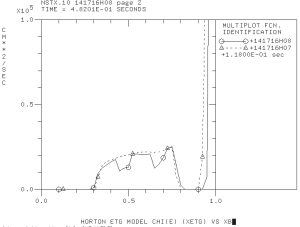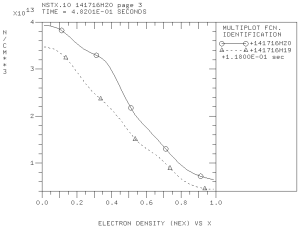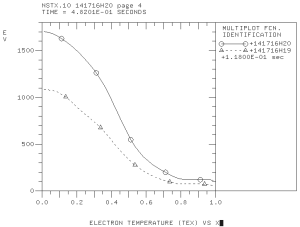Testing of the Weiland, ETG and DRIBM models for the NSTX discharge 141716
Several short PTRANSP simulations are performed to test the effect of the ExB flow shear on Weiland (ITG/TEM) and DRIBM diffusivities. The PTRANSP code has been run for a very short time to ensure that the plasma profiles do not change significantly from the experimental profiles. This choice of the PTRANSP parameters will allow direct comparison of the effective diffusivities, computed using the predictive transport models, with the diffusivities obtained in an interpretive TRANSP runs. [The TRANSP code does not support running predictive transport models when it runs in the interpretive mode.]
I used the following PTRANSP parameters in my simulation:
TINIT=0.482 !**** START TIME
FTIME=0.48201 !**** STOP TIME
DTMINT=4.e-6
DTMAXB=1.e-5
DTMAXT=1.e-5
DTINIT=1.e-5
TBONMIN=0.80 ! !**** MINIMUM BEAM TURN ON TIME
For the first set of simulations the start time was TINIT=0.364 and for the second set the start time was TINIT=0.482. For the both sets, the simulations run for 1e-5 sec. There were no sources in these simulations enabled. The objective was to estimate the predictive diffusivities for the experimental profiles and to validate some trends in the diffusivity profiles between the two time slices.
I found that the that the ETG diffusivities change very little between the two time slices.  The result is somewhat unexpected because the plasma profiles are rather different:
The result is somewhat unexpected because the plasma profiles are rather different:
While the electron density gradients change very little, there is a large increase of electron temperature gradient in the region from to
. We assume that there is almost no flow shear effect in the ETG diffusivities and the ETG model does not include the ExB flow shear effect.



Leave a Reply